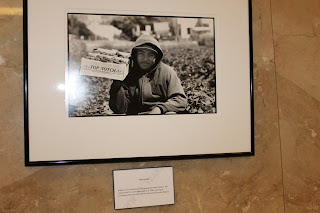LAKE COUNTY –
"At 6 years old, she weighed not much more than one of the cannon balls
that tore through the people like a boulder though willows. Crouching
beneath the water beside the bank she sipped air through a reed to
maintain her life. Above her, an old world was ending, washed in blood.”
Those
are the words Clayton Duncan uses to tell the story of his
grand-grandmother, Lucy Moore, and her survival of the events of Bloody
Island.
The
year was 1850. Lucy hid in the bloodied water behind the tules with her
mother at Badonnapati, Old Island – called Bloody Island after dragoons
and a militia under the command of Captain Nathaniel Lyon massacred
between 150 and 200 Pomo men, women, elders and children, bayoneting
women and babies, stepping on and crushing infants, "braining" (a 19th
century term) children by smashing their heads against tree trunks.
Given some limited public outcry, they were charged for these crimes but not convicted, and Lyon later was promoted.
The
members of the militia, some of them prominent members of society,
subsequently took ownership of the best Pomo lands around the lake and
all over Lake County, said Duncan, for the unofficial design of this
particular expedition was to "clear" the land of its indigenous
inhabitants, as the official policy of California, supported by the
federal government, was to exterminate all of the Indian population.
A
few Pomo people survived Bloody Island. It took five days to gather the
bodies for cremation, Duncan said. Orphaned children had to be hidden
from settlers gathering slaves for the market in central California.
Despite
this and many more hardships unleashed on native people by the US,
Duncan said Lucy Moore became a mother, a grandmother and
great-grandmother, lived to be 110 years old, and in her old age prayed
every day to forgive America.
It
is in her memory and to honor her, her prayer and all who died at
Bloody Island that Duncan created the Lucy Moore Foundation in 2000,
having for many years approached the tribal leadership to address some
of the following issues, without success.
The
foundation organizes the yearly May 15 Sunrise Ceremony at Bloody
Island, to honor and remember the people who died there during the
massacre.
The
Lucy Moore Foundation's vision is to educate the public about the
massacre, one of many in California, according to Duncan. The group also
is working to locate, preserve and memorialize the site of the mass
grave – where the victims of the massacre, whose only fault was to live
on their own land and stand in the way of America's expansion – were
thrown into a hole and cremated.
The
foundation's mission is to pronounce Bloody Island and the surrounding
500 acre of marshlands an area of archaeological sensitivity, as a
variety of significant prehistoric and historic periods archaeological
sites exist within the borders of the 500 acres Bloody Island project
boundaries.
As
part of that mission, the foundation wants to buy Bloody Island and
preserve the rich archaeological and anthropological resources known to
exist in great abundance on and around the Island, its wetlands and its
bay."
This long quote above is a far distant thing from the quote on this plaque, plus the dates are different. At any rate, the Bloody Island plaque out on Hwy 20 tells the story as it most certainly was. The tip of the rock it is embedded in points to where we were for the sunrise ceremony this morning commemorating the massacre, exactly on the rock where this paint reddened plaque is. It was deeply moving-- the spirits of the ancestors were there to meet the cries of the people who remembered them as the day began. Strong and eloquent survivors ringed by supporters.
When I got home it was graduation madness in Chico, farmers market, the Peace Vigil, Food Not Bombs and Oya Ross-Walcott's graduation party--she now has a degree in engineering. This is her family-- Baba, Oya, Nicola, Ikiti, and Mharia. All One Family. All My Relations.














































 T
T





